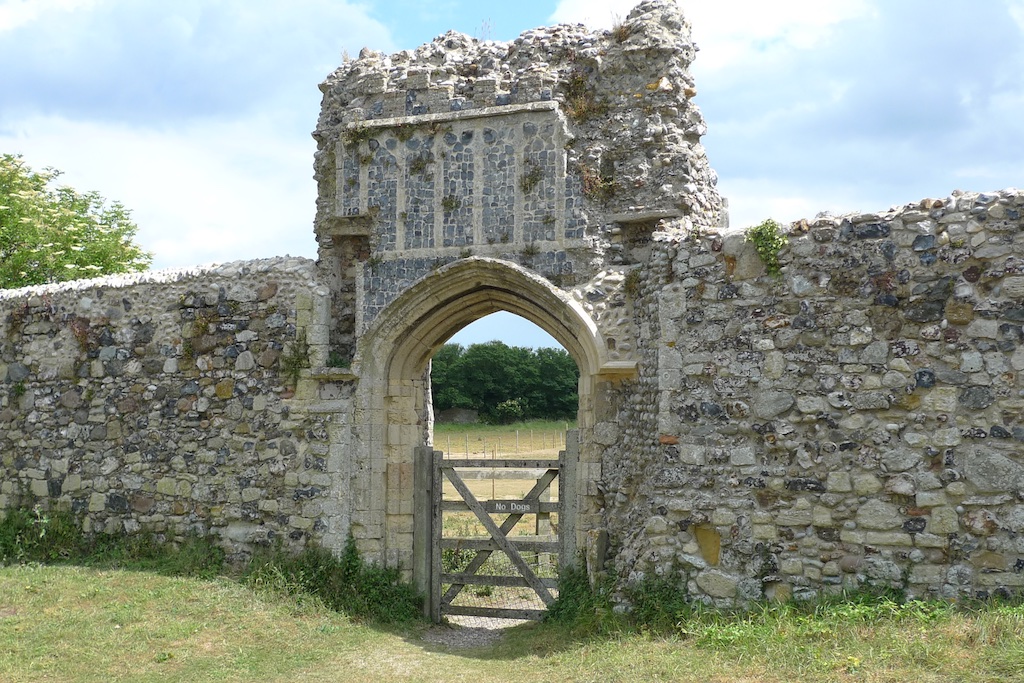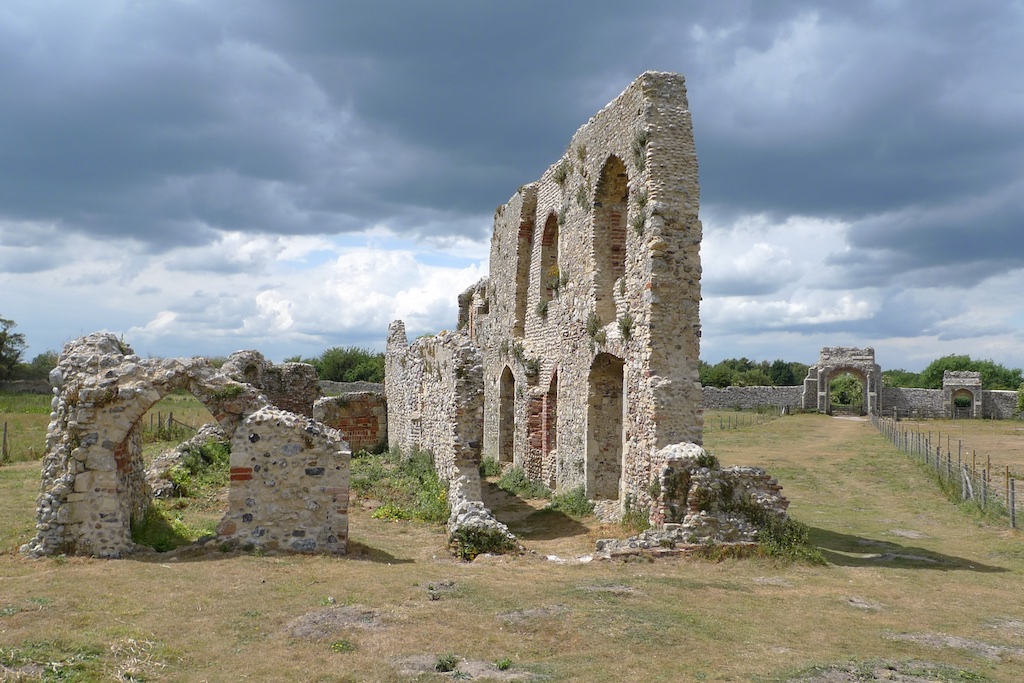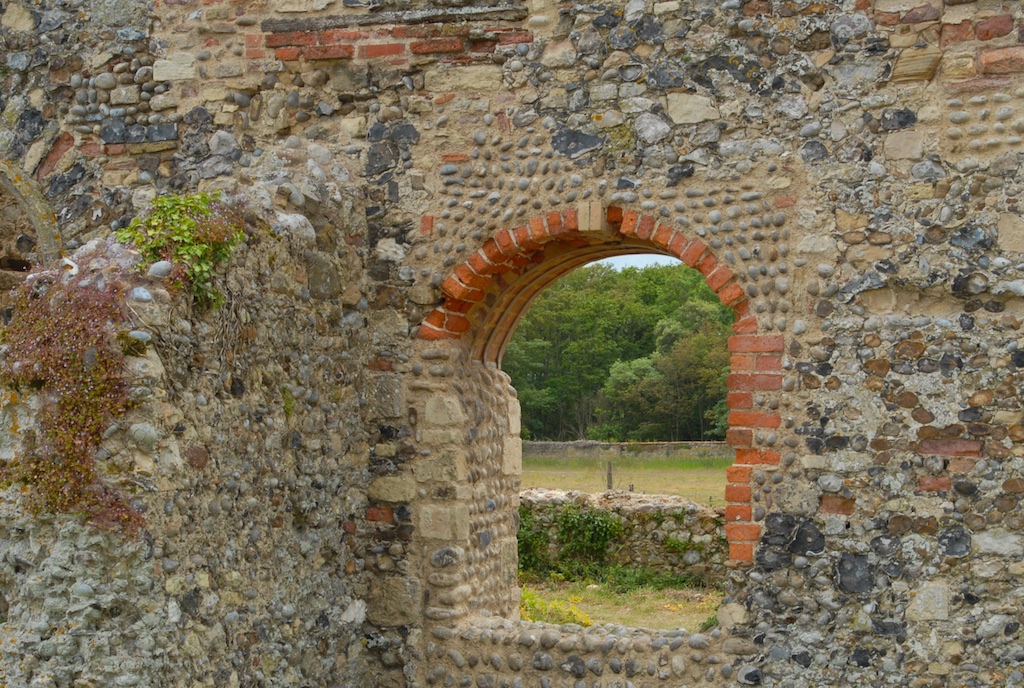Pictures of buildings mentioned in the second edition “Suffolk” volume of “The Buildings of England” series by Sir Nikolaus Pevsner.
Dunwich is more famous for what is not there than what is, having fallen into the sea over the centuries with the most disastrous events in C14. It was once a major port and had Bishops from about 632: it was revived as a suffragen see in 1934. Nowadays it is a small village.
The entry for Dunwich is taken up by the history of how much of it was consumed by the sea in the C14 and subsequently until as recently as 1919. The entry starts with a flowery Victorian quote from 1848 which is carried forward into the third edition. The main area covered here is that of the ruins of the Franciscan Friary dating from 1290. "The friary had been founded before 1277, but had to be moved further inland in 1289, following the necessities of the site of Dunwich, a site which reduced a Saxon cathedral city and one of the most prosperous ports of Suffolk to its present solitude. Dunwich became a see under St Felix of Burgundy in 632." : there is a footnote about this in the second edition but the third edition largely confirms the original text and notes that the c630 see "is generally considered to be Dommoc".
The description of the friary is: "The N wall has buttresses and windows with four-centred heads in two tiers, the S wall is fragmentary. The structure stood along the S side of the cloister, and its ground floor was indeed the S cloister walk. The upper floor probably contained the refectory. The church has utterly disappeared. Of the gatehouse the archway and a smaller doorway can still be seen. Both arches are four centred. The moulding of the larger has one chamfer and two hollow chamfers. Above the smaller is some flushwork paneling". Some views follow:
The entry for Dunwich is taken up by the history of how much of it was consumed by the sea in the C14 and subsequently until as recently as 1919. The entry starts with a flowery Victorian quote from 1848 which is carried forward into the third edition. The main area covered here is that of the ruins of the Franciscan Friary dating from 1290. "The friary had been founded before 1277, but had to be moved further inland in 1289, following the necessities of the site of Dunwich, a site which reduced a Saxon cathedral city and one of the most prosperous ports of Suffolk to its present solitude. Dunwich became a see under St Felix of Burgundy in 632." : there is a footnote about this in the second edition but the third edition largely confirms the original text and notes that the c630 see "is generally considered to be Dommoc".
The description of the friary is: "The N wall has buttresses and windows with four-centred heads in two tiers, the S wall is fragmentary. The structure stood along the S side of the cloister, and its ground floor was indeed the S cloister walk. The upper floor probably contained the refectory. The church has utterly disappeared. Of the gatehouse the archway and a smaller doorway can still be seen. Both arches are four centred. The moulding of the larger has one chamfer and two hollow chamfers. Above the smaller is some flushwork paneling". Some views follow:

.

.

.
